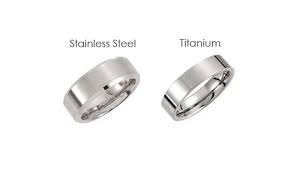Is titanium harder than steel? Learn the real difference between titanium and steel in terms of hardness, strength, and machinability. Discover expert insights and logistics support from GWT Worldwide.
In engineering and manufacturing, few debates stir as much curiosity as the comparison between titanium and steel. They are both strong, durable, and essential to modern industries. But which is harder? And more importantly, which is better suited for specific applications like aerospace, automotive, and construction?
In this guide, we’ll explore the real answer to whether titanium is harder than steel, with insights on machining difficulty, use cases, cost, and logistics needs for global supply chains.
1. Defining Hardness in Materials
Hardness refers to a material’s ability to resist deformation, indentation, or scratching. In metallurgy, different types of hardness tests (Brinell, Rockwell, Vickers) measure this resistance. However, hardness alone doesn’t define a metal’s usefulness—it must be considered along with strength, ductility, and corrosion resistance.
2. Titanium vs. Steel: A Quick Overview
Titanium is a lightweight, corrosion-resistant, high-strength metal often used in aerospace and medical industries. Steel is a widely used alloy of iron and carbon that offers high hardness, toughness, and versatility at a lower cost.
3. Is Titanium Harder Than Steel?
No—steel is generally harder than titanium. On the Mohs scale of hardness:
- Titanium scores about 6.
- Hardened steel scores between 7 and 8.
So, in terms of scratch resistance and indentation, steel is harder than titanium.
4. Tensile Strength: The Power to Withstand Force
Titanium Grade 5 (Ti-6Al-4V) has a tensile strength of about 950 MPa. In contrast, high-strength steel alloys can exceed 1,200 MPa. While titanium has a great strength-to-weight ratio, steel typically wins in pure tensile strength.
5. Titanium’s Greatest Advantage: Strength-to-Weight Ratio
Though not harder, titanium is strong for its weight. Titanium is 45% lighter than steel, making it ideal for aerospace and high-performance automotive components where reducing weight is essential.
6. Elastic Modulus and Deformation
Steel has a higher modulus of elasticity, meaning it’s more rigid and resists bending more effectively than titanium. Titanium, though strong, is more flexible and may deform more easily under stress.
7. Corrosion Resistance: Titanium Dominates
Titanium is almost immune to corrosion, even in seawater and chemical environments. Steel, unless stainless or treated, is prone to rust and corrosion. For marine or medical applications, titanium is the clear winner.
8. Machinability: Why Titanium Is Hard to Machine
Titanium is difficult to machine, not because of hardness but due to:
- Low thermal conductivity (heat stays at the cutting zone),
- Tendency to work harden,
- Elastic rebound during cutting.
These traits lead to tool wear, heat buildup, and slower cutting speeds, as noted by Kingsbury.
9. Steel’s Ease of Machining
Steel, especially carbon and alloy steels, is much easier to machine. Tooling is simpler, heat disperses faster, and it doesn’t “spring back” like titanium. Even hardened steel is manageable with coated tools and coolant strategies.
10. Tool Selection for Titanium vs. Steel
Machining titanium requires:
- High-performance carbide tools,
- Sharp cutting edges,
- High-pressure coolant systems.
Steel machining allows for more flexibility in tool material, coatings, and feed/speed combinations.
11. Heat Management While Machining
As Harvey Performance explains, titanium retains heat at the cutting interface. This leads to thermal damage to tools if not managed. Steel disperses heat better, making it easier to machine at high speeds.
12. Weldability and Fabrication Differences
Steel is widely welded using MIG, TIG, and arc processes with minimal preparation. Titanium welding is complex—it needs argon gas shielding and strict contamination control, especially in aerospace or medical welding.
13. Titanium in Aerospace: Light but Strong
Titanium is essential in aircraft frames, engine parts, and spacecraft. It combines lightweight performance with exceptional resistance to heat and fatigue, where steel’s added weight would be a disadvantage.
14. Steel in Infrastructure and Automotive
Steel remains dominant in construction and automotive sectors due to:
- Cost-effectiveness,
- High strength,
- Easy fabrication.
Steel structures can withstand massive loads and harsh environments when properly coated.
15. Medical Applications: Titanium’s Biocompatibility
Titanium is biocompatible, meaning the human body doesn’t reject it. It’s used in joint replacements, dental implants, and surgical tools. While some stainless steels are used medically, they don’t match titanium’s safety and longevity.
16. Cost Comparison: Titanium vs. Steel
Titanium is 4–5 times more expensive than steel. Mining, refining, and machining titanium add to the cost. Steel is more affordable, especially for mass production and large structures.
17. Durability in Extreme Environments
Titanium resists corrosion and maintains strength in nuclear, marine, and high-temperature environments. Steel may degrade in these settings unless heavily treated.
18. Sustainability and Recyclability
Both metals are recyclable. Steel has a global recycling infrastructure, while titanium recycling is limited but growing due to the high value of titanium scrap.
19. Use in Consumer Products
Steel is common in tools, appliances, and automotive parts. Titanium is more niche—used in luxury watches, performance bikes, and premium electronics, where weight and aesthetics matter.
20. Global Transport of Titanium and Steel
Both metals require specialized global logistics. Titanium components, due to their high value and precision, need secure, timely, and trackable transport solutions. Steel is usually shipped in bulk via sea freight.
บทสรุป
While steel wins on raw hardness and cost, titanium shines in specialized industries where weight, corrosion resistance, or biocompatibility are critical. Engineers, manufacturers, and designers must choose the material that best fits the application—not just by “hardness,” but by understanding the full performance picture.
When it comes to moving these critical materials across borders or into production lines, GWT Worldwide offers trusted logistics solutions that bring titanium or steel safely from origin to destination—fast, secure, and seamless.

